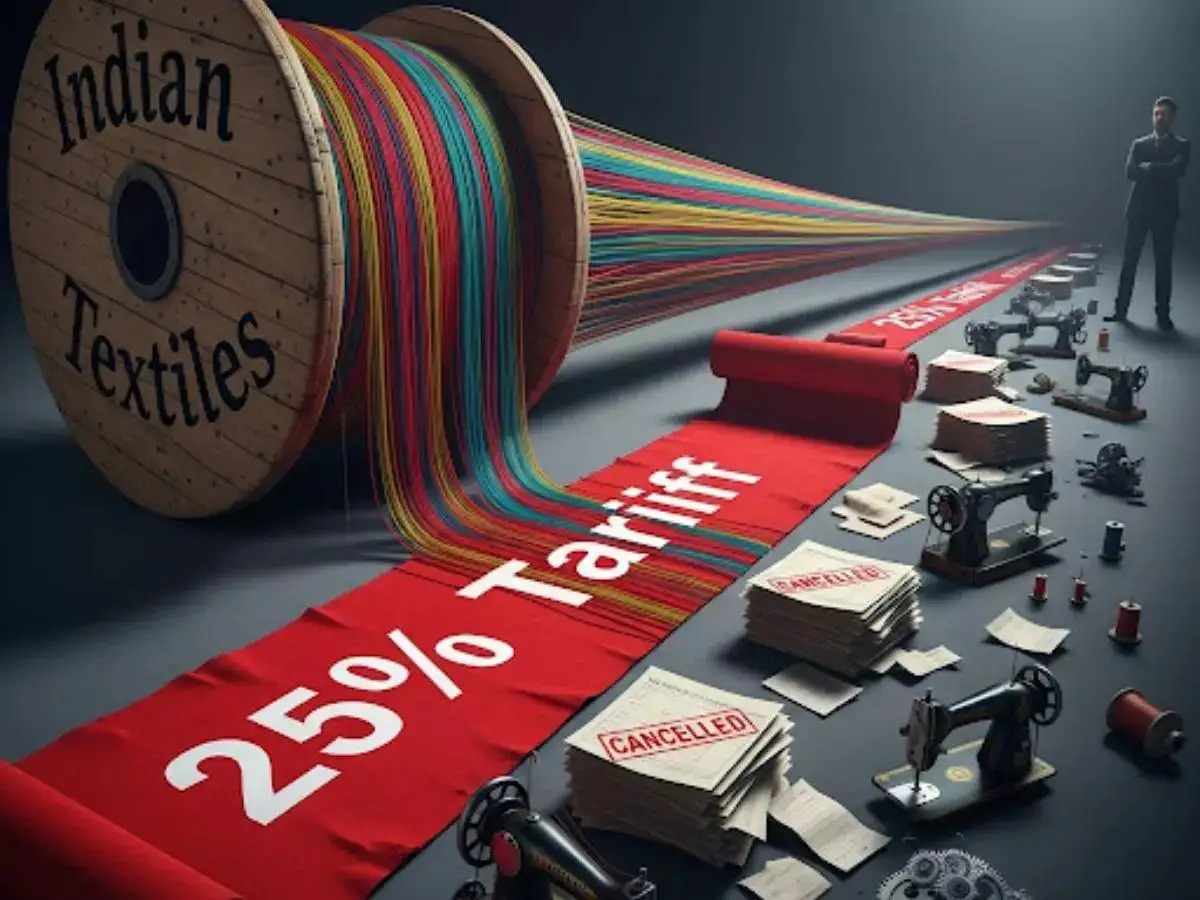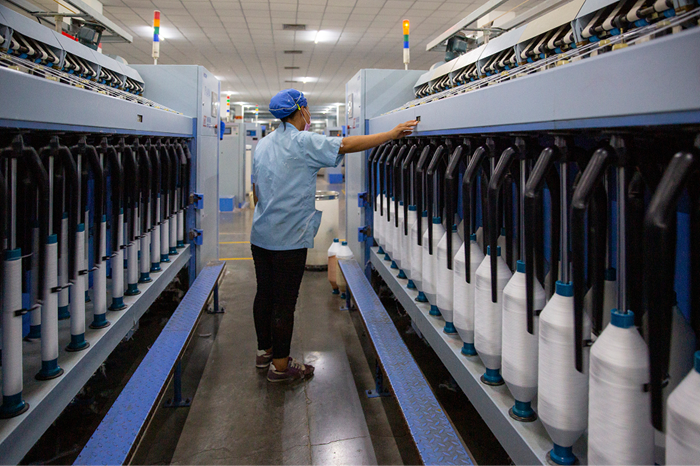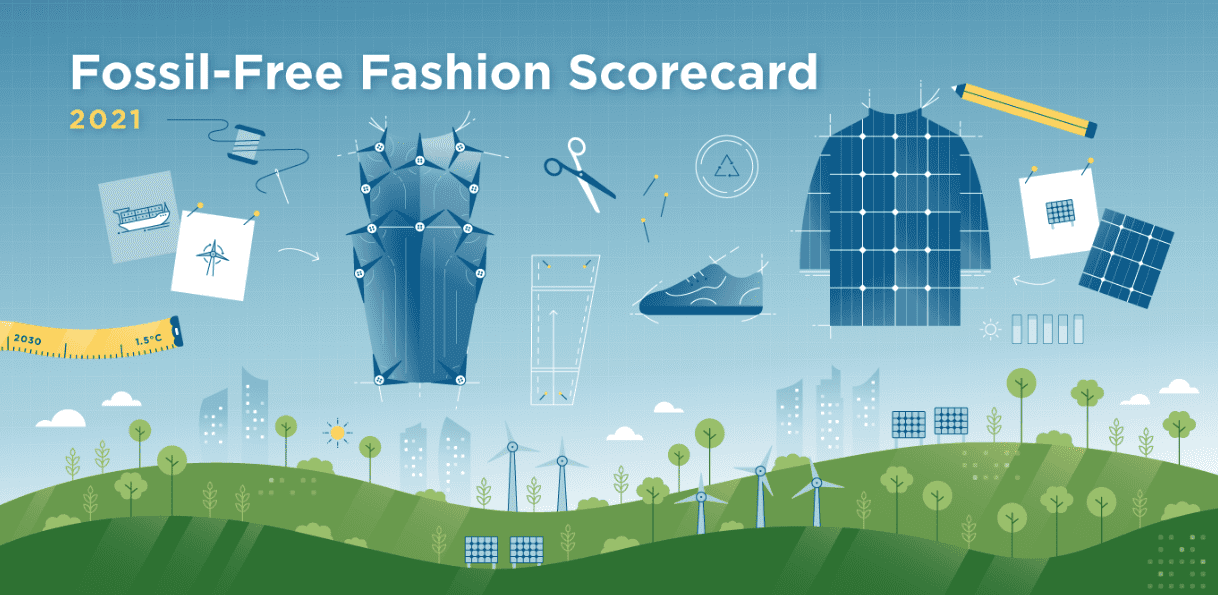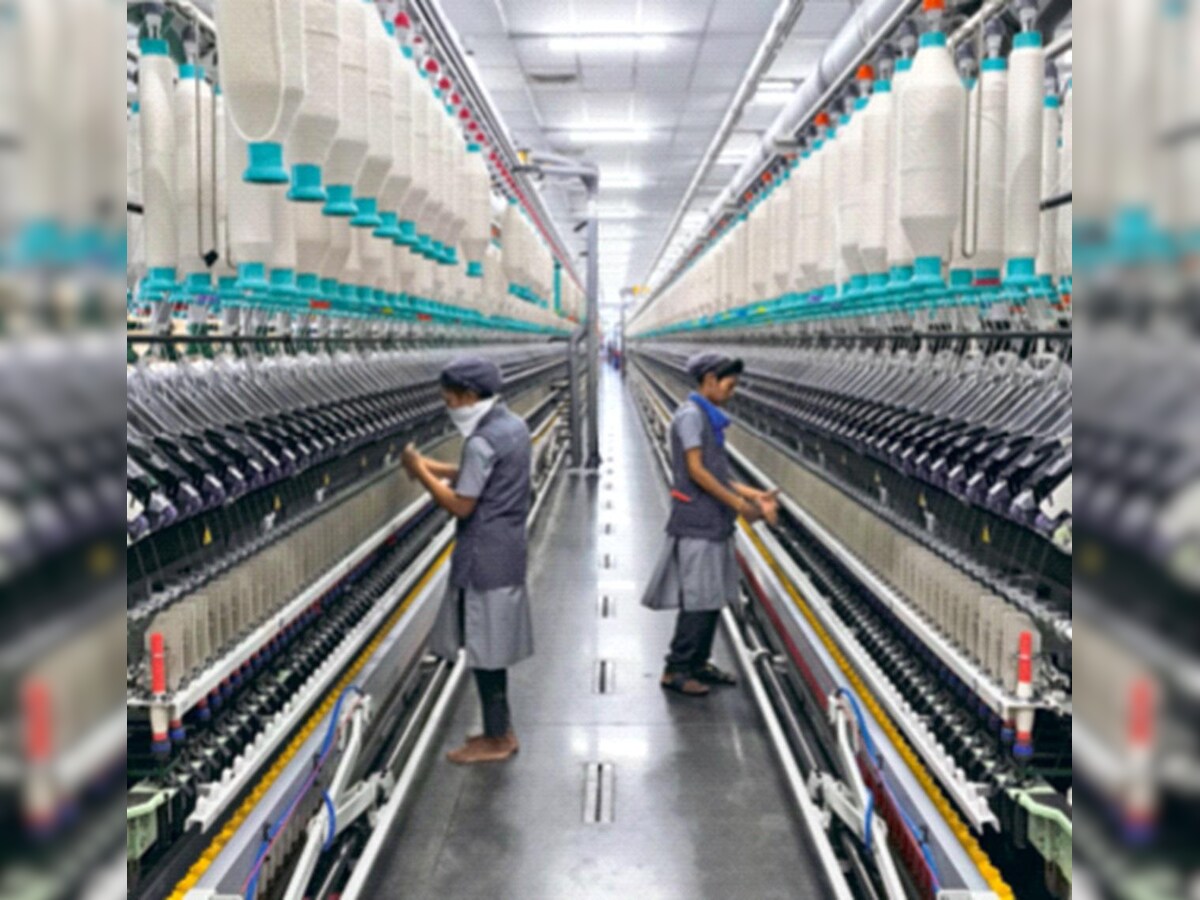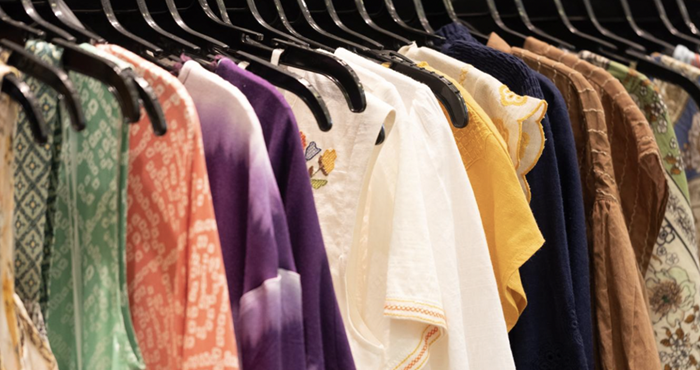FW
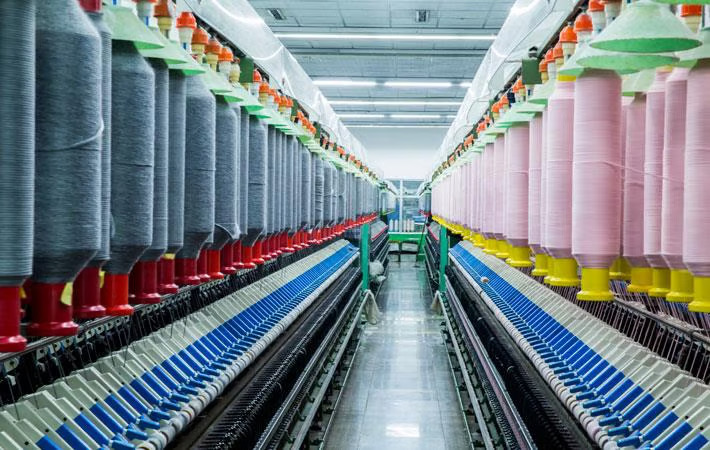
For decades, cotton has defined India’s manufacturing identity and policy priorities, even though global demand has shifted towards synthetics. Today, Man-Made Fibres (MMF) make-up nearly three-fourths of the world’s fibre consumption, forming the raw material backbone for everything from athleisure to outdoor performance gear. India’s export competitiveness has suffered because it has remained heavily skewed towards natural fibres, limiting its participation in the fastest-growing apparel categories.
This imbalance is now beginning to correct itself, led by one of India’s most influential integrated textile players, Vardhman Textiles Limited (VTL). The company’s Rs 350 crore investment in a state-of-the-art synthetic performance fabric plant in Baddi marks a decisive step toward building domestic capability for advanced technical textiles. More importantly, it highlights a shift to reduce India’s longstanding dependence on imported high-performance fabrics, which had previously placed local garment exporters at an inherent disadvantage compared to Vietnam, China, and Indonesia.
Rebuilding value chain yarn upwards
The most important challenge for India’s technical textile ambitions has been the fragmentation of its value chain. While the country has strong spinning capabilities, its ability to produce specialised performance fabrics, particularly the complex weaves and filament blends needed by global brands has remained limited. Vardhman’s new plant is designed to address this systemic gap by creating a fully integrated pipeline that begins at the yarn stage and flows seamlessly into MMF-based woven fabric manufacturing.
The company’s existing spinning infrastructure of over 1.2 million equivalent spindles, capable of producing a wide range of cotton, polyester, acrylic, and blend yarns, serves as the foundation for this integration. The new facility builds on this base with high-speed water-jet and air-jet looms, enabling the production of fine-denier, high-stretch, abrasion-resistant and tightly constructed fabrics. These fabrics are essential for the world’s fastest-growing apparel segments viz, sportswear, activewear, outdoor gear, and performance-driven workwear, categories that have increasingly shaped consumer behaviour in the US, Europe, and the UK.
By positioning these capabilities under one operational umbrella, Vardhman is effectively establishing one of India’s first scalable platforms for premium performance textiles, an area that has long been dominated by East Asian manufacturers.
Technology that bridges the global gap
The standout differentiator at the Baddi plant is the introduction of one of India’s earliest double-head coating systems, capable of processing both solvent-based and water-based coatings. Unlike conventional units that offer only single-process finishes, this dual-coating capability expands the range of functional treatments that can be applied to fabrics. These include waterproof and breathable membranes, wind-resistant layers, stain-repellent surfaces, and bonded composites used in multi-layered gear.
This technological sophistication brings India closer to the finishing standards required by global outdoor, athleisure, and technical workwear brands. Experts say, Decathlon was involved from the conceptualisation phase of the plant, signalling buyer confidence in India’s emerging MMF ecosystem. The development is a shift in sourcing patterns, where global brands, traditionally reliant on Chinese and Korean mills are now starting to evaluate India not just as a garment supplier, but as a viable materials hub.
All about global fibre demand gaps
The following snapshot illustrates the mismatch between global demand and India’s historic fibre mix:
Table: Global and Indian fibre market comparison
|
Fibre Type |
Global share (approx.) |
India's share (approx.) |
Gaps/challenges for India |
|
Man-Made Fibers (MMF) |
75% |
40-45% |
High dependence on cotton affects competitiveness in the global market. |
|
Natural Fibres |
25% |
55-60% |
Oversupply in low-margin cotton categories restricts value-addition and diversification. |
This data highlights a long-standing reality: India’s dominance in cotton does not translate into competitive advantage in the global apparel marketplace, because modern fashion is primarily synthetic-rich. From yoga leggings and gym tops to outdoor jackets and industrial uniforms, the global demand is driven largely by polyester and nylon blends that combine comfort, durability and performance. Vardhman’s move into MMF aligns India with this global trend line and reduces the structural handicap created by an unbalanced fibre portfolio.
Relief for apparel exporters
Indian apparel manufacturers have long been constrained by the need to import synthetic stretch fabrics and technical nylon blends, often waiting eight to twelve weeks for shipments to arrive from China or Korea. These long lead times have hindered their ability to cater to fast-fashion timelines and respond quickly to seasonal design changes.
With Vardhman’s new MMF facility now operational, exporters gain immediate access to domestically produced high-performance fabrics, reducing sourcing delays by nearly half. This shift fundamentally changes the competitiveness of manufacturers serving Western markets, where retailers increasingly demand shorter delivery cycles and more flexible product assortments.
The plant’s initial production capacity of 1.5 million meters per month, focused primarily on polyester-rich blends with a supporting share of nylon, directly meets the raw material needs of India’s most dynamic apparel segments. For exporters targeting the US, EU, and UK markets that collectively represent about two-thirds of India’s apparel shipments this supply-chain consolidation could be transformative.
Table: India's apparel export markets and MMF opportunity
|
Market |
Share of India’s apparel exports (approx.) |
Categories impacted by MMF/synthetics |
|
US |
27% |
Athleisure, Performance Basics, Synthetics |
|
EU |
33% |
Outdoor Apparel, Fast Fashion |
|
UK |
6% |
Sportswear, Layered Garments |
|
Total Western Share |
66% |
All High-Stretch and Coated Fabrics |
A closer look at India’s top export destinations underscores the importance of the MMF transformation. Western buyers favour performance-driven clothing, which relies heavily on synthetic materials. As India strengthens its domestic MMF fabric capabilities, it becomes better positioned to service these markets with both cost efficiency and speed two non-negotiable demands in the global supply chain.
Financial muscle behind the expansion
The scale of Vardhman’s synthetic-fabric ambitions is underpinned by the company’s robust financial base. Although the global textile market has seen volatility, the company recorded a net profit of Rs 187.76 crore in Q2 FY26, a modest decline despite industry pressures. Importantly, the company’s EBITDA margin grew 13.5 per cent, signalling a shift toward higher-value product categories. With a current ratio of 4.6x in FY25, Vardhman maintains a strong liquidity position, giving it the resilience and flexibility needed to pursue long-term investments.
The Baddi MMF unit is part of a broader Rs 2,000 crore capex programme that includes spinning modernisation, fabric capacity expansion, and the development of new technical textile capabilities. The company anticipates the new plant reaching 20-30 per cent utilisation by Q4 FY26, with the ramp-up expected to meaningfully contribute to revenue and margins from FY27 onward.
Table: Vardhman’s legacy and its next growth chapter
|
Market |
Share of India’s apparel exports (approx.) |
Categories impacted by MMF/synthetics |
|
US |
27% |
Athleisure, Performance Basics, Synthetics |
|
EU |
33% |
Outdoor Apparel, Fast Fashion |
|
UK |
6% |
Sportswear, Layered Garments |
|
Total Western Share |
66% |
All High-Stretch and Coated Fabrics |
Vardhman’s heritage is deeply rooted in yarn manufacturing, yet the company has consistently expanded into higher-value segments over the decades. With a 43 per cent export share in FY25, the company is uniquely positioned to benefit from the global pivot toward synthetic-rich categories. Its future strategy places significant focus on MMF leadership, signalling a deliberate shift away from traditional, lower-margin product lines.
A structural reset for India’s global position
What Vardhman has initiated is not merely the commissioning of another textile mill; it is a structural reset of India’s fibre identity. The timing is aligned with national policy measures such as the PLI scheme, the establishment of PM MITRA parks, and ongoing discussions to rationalise duties on synthetic fibres. If other large players follow Vardhman’s lead, India could finally evolve from a cotton-centric manufacturing base to a full-spectrum textile powerhouse capable of servicing modern fashion’s most essential material needs. With the Baddi plant now operational, the MMF transition is more than an industry aspiration, it is a reality unfolding across shop floors, coating lines, and weaving sheds. And with that, India’s long-awaited fibre correction finally has momentum.
Entering the highly competitive fashion retail technology landscape, Perplexity AI has launched the new Rapid-Fire Virtual Try-On feature. Available to the company's Pro and Max subscribers, this innovation uses generative AI to instantly create a digital avatar from a customer’s photo, allowing for a near-instant preview of how clothing will drape and fit. The most significant aspect of this launch is its laser focus on speed and boosting conversion in the trillion-dollar e-commerce apparel sector.
The largest hurdle in online fashion retail is the staggering high rate of returns, which averages around 30 per cent for online apparel purchases. Virtual Try-On (VTO) technologies are explicitly designed to mitigate this friction point. Case studies from other retailers demonstrate that successful VTO adoption can lead to a reduction in fit-related returns by up to 64 per cent and an increase in conversion rates by 10–90 per cent for engaged users.
Perplexity's key advantage is the speed of its simulation. By prioritizing a rapid ‘fit check’ over the more complex, slower, full-outfit visualizations offered by competitors, the tool directly addresses the consumer's need for instant gratification, thereby boosting buyer confidence at the critical moment of purchase.
This product launch confirms that Augmented Reality (AR) and Generative AI are now non-negotiable strategic infrastructure for modern fashion retailers. Perplexity is leveraging its core AI strengths to compete with established e-commerce players and large technology firms.
While the feature currently focuses on individual items, its underlying computer vision and fabric simulation capabilities are perfectly poised to capture the tech-savvy Gen Z and Millennial shoppers who demand hyper-personalized, immersive experiences. For retail brands, integrating such tools is paramount to unlocking profit by solving the immense logistical and environmental burden of returns, ultimately positioning AI as the new, high-efficiency fitting room.
Italian luxury powerhouse Valentino is facing a severe reputational crisis after releasing an AI-generated campaign for its new 'DeVain' handbag. The visuals sparked an immediate and intense backlash from loyal consumers and the creative community, marking a critical flashpoint in the luxury sector's uneasy adoption of generative AI.
The controversial imagery, which features distorted, surreal elements and models seemingly emerging from gold hardware, was widely condemned across social media platforms. Critics denounced the visuals as ‘disturbing,’ ‘lazy,’ and ‘cheap.’
For a brand like Valentino, which trades on the core principles of haute couture and human artistry- values intrinsically linked to hand-stitched embroidery and meticulous craftsmanship—outsourcing its visual narrative to a machine is perceived as a fundamental disconnect. Research confirms, when luxury brands disclose the use of AI in advertising, consumers often evaluate the resulting ads as being made with lower effort. This perception directly damages the brand's authenticity.
The backlash risks eroding the very foundation of Valentino's brand equity at a challenging time. Its parent company is working to sustain revenue against luxury market deceleration and is already dealing with a 22 per cent drop in operating profit in 2024.
Valentino, which generates 95 per cent of its online sales from Fashion and is aggressively expanding its high-touch, experiential retail network - including new flagship openings in Riyadh and Tokyo in 2025 - is clearly prioritizing long-term relevance. However, this failed AI experiment demonstrates the significant risk of prioritizing cost-cutting efficiency over the emotional resonance that defines the luxury consumer experience.
Prime Minister Mostafa Madbouly announced, some of the top priorities of the Egyptian Government include aggressively pursuing national textile-industry development projects to substantially boost production capacity, alongside reviewing plans to better utilize state-owned assets.
Madbouly made these remarks during a recent meeting with a high-level delegation, including Ahmed Kouchouk, Minister of Finance; Adnan Fangari, Minister of Justice; Mohamed Shimi, Minister of Public Business Sector; Ahmed Khaled Hassan, Alexandria Governor and other relevant ministry officials.
Mohamed el Homosany, Cabinet Spokesperson stated, the meeting thoroughly reviewed the progress of upgrading textile companies nationwide. Officials presented detailed components of the development, including completion rates, target production capacities, and specific plans to secure the necessary cotton and raw materials.
The government noted, covering over one million sq m, these extensive upgrade projects include new construction and the installation of modern machinery.
The overarching development plan aims to drastically increase Egypt’s annual yarn production from 29,000 tons to 133,000 tons. It aims to increase fabric production from 25 million sq m to 198 million sq m and production of ready-made garments from 8 million to 40 million pieces.
According to the spokesperson, these targets underscore the government’s commitment to transforming the sector and achieving industrial self-sufficiency and export growth.
A long-established leader high-quality textile and garment manufacturer, Mauritiusis executing a strategic pivot away from its traditional reliance on the highly competitive United States market. This move is essential for the long-term survival of its apparel sector, driven by the erosion of preferential trade terms and fierce cost pressure from Asian manufacturing powerhouses.
For years, Mauritian apparel, which produces premium goods for brands like Marks & Spencer and Calvin Klein, benefited from duty-free access to the US via the African Growth and Opportunity Act (AGOA). However, this dependence is increasingly viewed as risky due to AGOA's periodic renewal and intense cost competition from other AGOA-eligible nations, such as Madagascar.
The numbers confirm the shifting dynamics: in 2024, combined knitted and non-knitted apparel exports to the U.S. totaled approximately $35 million. In stark contrast, exports to the European Union (EU) were significantly stronger, reaching roughly $67 million in the same categories, solidifying the EU as the dominant and more stable market.
The new strategy centers on diversification and value addition. Mauritius is emphasizing vertical integration and design-led production to justify its higher labor costs. The African Continental Free Trade Area (AfCFTA) is now a major focal point, providing duty-free access to a massive continental market, with South Africa already being a key export destination.
Furthermore, the India-Mauritius Comprehensive Economic Cooperation and Partnership Agreement (CECPA) is being leveraged to boost exports to India. The primary challenge moving forward is the continuous need to upskill the workforce to transition the sector entirely into high-fashion, niche, and technically complex garments to maintain global relevance.
Once again demonstrating its resilience, India’s textile and apparel sector has effectively navigated a turbulent global landscape defined by economic uncertainty, geopolitical tensions, and tariff pressures from key markets.
Fresh data from the Directorate General of Commercial Intelligence and Statistics (DGCIS) reveals, India’s textile, apparel, and handicraft exports reached $18.24 billion during April–September 2025, registering a modest but meaningful growth of 0.1 per cent Y-o-Y. While shipments to the United States softened due to continued tariff challenges, robust performance in other regions successfully cushioned the impact, underscoring the sector’s successful diversification strategy.
Amid these external pressures, Tamil Nadu has emerged as a key pillar of stability and growth. As India’s most significant textile-exporting state, it posted a 2.6 per cent rise in exports, climbing from $3.98 billion to $4.08 billion in the period. The state’s vibrant textile hubs—Tiruppur, Karur, Erode, Coimbatore, and Salem—delivered an impressive 11.4 per cent combined export growth. Tiruppur, India’s leading knitwear center, particularly benefited from improved cotton availability following the government’s temporary import duty exemption, which helped ease pressure on raw material costs.
A major player in French menswear, Celio is revitalizing its brand, moving beyond its ‘normal’ universe with a comprehensive new store concept, first unveiled in summer 2024 and officially rolling out in 2025. This strategic shift includes the momentous debut of a mixed-gender offering, testing womenswear alongside its core men's line for the first time on a large scale.
The cornerstone of this evolution is the brand's new 1,200-sq-m flagship store opening on level -1 of the Forum des Halles shopping center in central Paris, placing Celio alongside premium brands like Lacoste and Sandro. This move is a significant step following a period of dynamic capsule collections—themed around manga, mountain wear (Chamonix-Mont-Blanc), and collaborations with influencers like Inoxtag and GMK—designed to surprise and attract new customers since the 2020 "Be Normal" campaign launch.
The new concept marks a distinct departure from the traditional red-and-white Celio aesthetic. It features large shopfronts, abundant lighting, open space, and the use of natural materials, moving towards an environment that is pared-back, elegant and structured. Developed with experts Laura Chavy (Ateliers AUAV) and Olivier Saguez (Saguez & Partners), the design utilizes omnipresent metal to neutralize the surroundings, allowing the quality, materials, and colors of the clothing to stand out, complemented by wood in service areas for warmth.
Sébastien Bismuth, CEO, Celio emphasizes, this 1,200-sq-m store doesn't just reprise the codes of our concept: it evolves them, adapts them and enriches them. The new store affirms the brand’s ambition to become a global player, capable of serving all customers, he highlights. women alike."
Previously tested in twenty ‘Bi-store’ locations under the ‘Be Camaïeu’ banner, this mixed-gender offer will gain significant exposure at the high-traffic Paris center. The overall strategy involves opening more spacious stores, like in Dijon, to showcase a deeper assortment. Importantly, Bismuth's team plans to leverage certain elements (metal fixtures, lighting, screens) to gradually align the existing network of 280 French stores without requiring a complete, costly overhaul.
With sales close to €600 million in 2023 and slight growth confirmed for 2024, Celio is backing this transformation with logistical expansion - its warehouse is adding over 12,000 sq m by early 2026.
One of the major attractions at this year’s Denim Premiere Vision Milan, held from November 26-27, 2025 was Xlance, the fiber engineered to allow fabrics to maintain their elasticity, comfort, and naturally soft hand feel even after the most intensive finishing processes, including industrial washing, laser finishing, ozone treatments, and thermal curing.
This robust resilience expands creative boundaries for designers, allowing them to push traditional treatment limits without sacrificing performance or the fabric's natural touch. The cross-linked polyolefin-based technology of Xlance positions itself as a reliable constant against an industry backdrop of fleeting trends.
Besides being an elastic fiber, Xlance also proves to be a durability guarantee - designed for denim that must endure, retaining its look, hand feel, and comfort wash after wash, year after year.
The collaboration with PureDenim showcased a denim specifically engineered to deliver consistent stretch performance over time. Luigi Caccia, Owner, confirmed that internal tests demonstrated Xlance fiber maintaining its elasticity even after intensive finishing. Furthermore, long-term evaluations confirmed remarkable performance stability after extended wear and multiple home-laundering cycles. The fabric preserved its initial elasticity and performance, proving that the technology delivers a denim that doesn't lose its identity or functionality under real-world stress.
Additionally, Xlance fabrics can be heat-set at low temperatures, which significantly contributes to a reduction in CO₂ emissions.
The garments featured at the Xlance booth were manufactured and washed by the Elleti Group of San Bonifacio (VR), a benchmark in premium denim processing. Elleti Group tested a diverse range of garments—from classic 5-pocket jeans to jackets and workwear—and confirmed that the fabrics with Xlance maintained consistent responsiveness and high stability, preserving their stretch and soft hand feel through high-intensity industrial treatments.
During the show, Xlance unveiled results from comparative testing with Tonello, an international leader in washing and finishing technologies. Tonello subjected two fabrics of identical weight and construction - one made with Xlance and the other with traditional Spandex - to aggressive wash cycles, high temperatures, and prolonged extreme treatments.
The Xlance sample exhibited superior stability and no loss of elasticity, confirming its ability to withstand demanding industrial processes while preserving comfort and performance.
Xlance is setting a new direction for the industry: a stretch denim designed for a future where ethics and durability are synonymous with style, translating to less waste, higher performance, and more creative freedom for designers.
Two exciting retailers are making a splash in Liverpool One this holiday season, bringing both local fashion and a viral global toy phenomenon to the city center.
Liverpool-born fashion brand Noughts & Kisses is making a brief, five-day return to the city center with an exclusive pop-up store at Liverpool One. Founded by Jemma Bradley in 2011, the company initially sold sunglasses but quickly expanded. It has since gained national recognition, with celebrity endorsements including Coleen Rooney. The brand is now known for its chic and stylish eveningwear, comfortable items, and co-ords.
Also opening this week in Liverpool One is the internationally renowned retailer Pop Mart. The toy shop will offer plenty of hot products, exclusive gifts, and so many surprises.
Founded by Wang Ning in 2010, Pop Mart has become one of the fastest-growing toy shops globally. Its recent resurgence is largely credited to the viral success of the Labubu fluffy toy, which has become a worldwide phenomenon. The unusual-looking toys have recently been spotted with numerous celebrities, including Rihanna, Dua Lipa, Kim Kardashian, and David Beckham.
Indicating a strategic move towards international expansion and providing an upgraded physical retail experience, Victoria’s secret opened its newest store in Pavilion KL, Kuala Lumpur
The opening of the new Victoria’s Secret (VS) store in Pavilion KL, Kuala Lumpur is the latest sign of VS&Co’s strategic move towards international expansion and an upgraded, physical retail experience, especially in fast-growing markets like Southeast Asia.
Boasting a high-concept façade with two entrances and luxurious details like a two-tier chandelier, the 2,500 sq ft store highlights the brand’s shift from its historically provocative image to one focused on accessible luxury and sophisticated inclusivity.
This investment by VS & Co in brick-and-mortar stores is a critical part of the company's ‘Path to Potential’ strategy, designed to strengthen the core, ignite growth. While the brand reported a 1 per cent increase in full-year net sales during fiscal 2024 to $6.230 billion, with international sales growing by 11 per cent, physical retail remains central to its operation. The design of the Pavilion KL demonstrates the brand’s commitment to operational excellence and provides a modern shopping experience
The brand’s renewed focus on a more welcoming store design directly addresses past brand issues. VS is actively refreshing its identity by promoting diversity and broadening its product categories, including more athleisure and size-inclusive options, to connect with Gen Z consumers who value authenticity. This is supported by digital efforts, such as its strategic collaboration with Google Cloud for an AI-powered conversational assistant to improve the online customer experience.
However, the real challenge for this global growth plan - which projects FY 2025 net sales between $6.2 billion and $6.3 billion - will be the brand’s ability to turn a beautiful store aesthetic into sustained cultural relevance and market share gains against direct-to-consumer competitors that champion body positivity.


